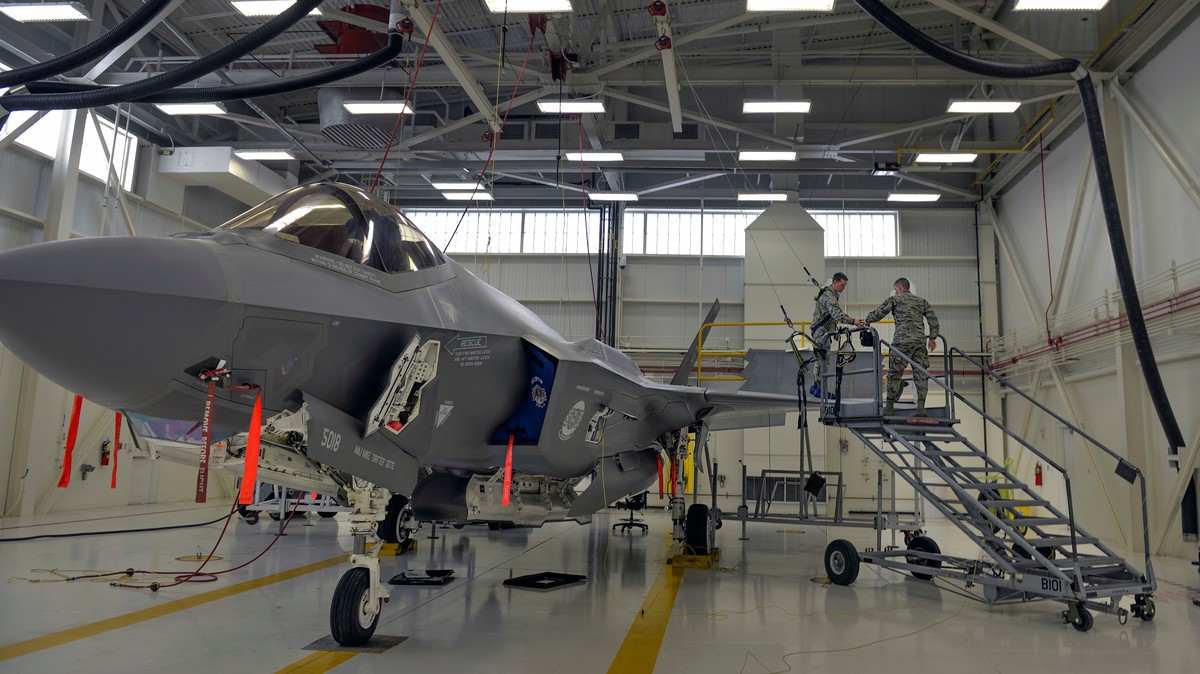America’s Military Can’t Repair Its Own $1.7 Trillion Jet | Only about half of the U.S.’s fleet of F-35 fighter jets is operational at any time due to difficulties with repairs, which must go throu…::Only about half of the U.S.’s fleet of F-35 fighter jets is operational at any time due to difficulties with repairs, which must go through contractors.



I’m not going to try to explain mission readiness, this is low, but the target is closer to 70%, so while it isn’t great, it’s not like it’s half of what’s expected.
Jets are complicated, they spend a lot of time in maintenance and inspection for each out of flight, its because they’re optimized for performance while passenger jets are optimized for endurance, safety and cost.
F35s are terrible jets for peacetime, as are most fighter jets. For combat they’re probably a lot better, they’re basically f16s with worse maneuverability, but better range, sensors, weapons and of course stealth, 1 f35 is worth at least 3 f16s.
But even this doesn’t matter, the next generation will be 80% drones, drones have phenomenal mission readiness ratings, often 90% or higher.
I’ll chime in as well and agree with you. The author of that article doesn’t seem know what he is writing about. Sure, he is kind of quoting the GAO article (it didn’t link correctly for me from the article) but he doesn’t quite know the insane amount of maintenance any aircraft go through.
I think my old squadron (HH-60’s) only had about 50% of its birds ready at any given time. That was about normal since saltwater is absolute hell on just about anything made of metal. Also Jr. pilots are generally idiots and break things, so that is a thing.
Honestly, I read the GAO report and thought it was fairly normal for a newer piece of equipment.
OMG, salt in the moisture in air around and inside light and precise metal parts, year round, my brain just connected these dots and felt pain. 🤯😬
Military helicopters are very resilient, I’ll give 'em that.
Aside from hydraulic struts being mostly exposed, most of the other bits are OK. The electronics are in solid metal boxes with really beefy connectors, so that is not too much of an issue either.
It’s the engines and the airframe that are the biggest issues. Engines have their own set of issues by themselves and misted saltwater amplifies those issues. The airframe is the worst though. Not only are they subject to normal stresses that cause micro-cracks like every aircraft, corrosion is accelerated due to bad operating conditions. An airframe is not something you would want to fail.
In short, almost all aircraft, military or not, should go through a phased inspection and repair cycle. As you move through the different phases (of which there are usually 4), the inspection gets deeper and more intense. The last phase usually involves tearing down the entire aircraft to its frame to conduct hyper-detailed inspections for cracks and corrosion. (My experience is limited to just private civilian fixed wing and naval military helicopters)
I came in to quote my own squadrons’ SH-60 readiness was typically 3 out of 6-7 birds. (SH-60F, so I’m old).
Sounds like we were in about the same time. I was stationed in Jax with HS-5, back in the day.
If I remember correctly, our squadron had both HH-60s and SH-60s? Somewhere, the MH designation got thrown in there and I am also too old to really keep track.
(I probably could still do an inspection with my eyes closed though.)
Yeah, I was left coast and Japan.
HS was a mix of SH-60F’s and HH-60H’s. But around 2010-2012, the F/B’s went away and the HS squadrons’ transitioned to MH-60’s, and the HSL squadrons’ went to the H-60R’s.
The HH-60H’s got their own squadrons’ that were specifically NSW support. East coast already had one, in VA, and they stood one up in SD.
HSC-84/85, I think. I also got out in 2012.
Ok, I remember hearing a little about those transitions when I was getting out in 2005. What you say makes sense since our role was SAR and anti-sub. (The SAR guys were responsible for dropping off and picking up SEALs as well.)
Thanks for validating my memories. Cheers, shippy.